MADEIRA
History

History

Popular destinations PORTUGAL
| Algarve | Azores | Costa de lisboa |
| Costa verde | Madeira |
History
Prehistory and Antiquity
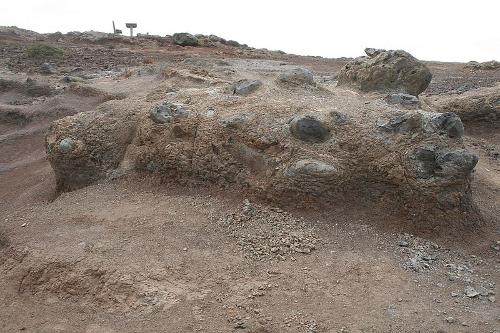 Ancient volcanic rock, MadeiraPhoto: Joan CC 3.0 Unported no changes made
Ancient volcanic rock, MadeiraPhoto: Joan CC 3.0 Unported no changes made
Volcanic eruptions from the Atlantic seafloor created many layers of lava that eventually reached the sea surface and created the Madeira Archipelago. All this happened from about 20 million years ago. Approx. 1.7 million years ago, the volcanic eruptions came to an end and seeds washed ashore and brought by birds provided the first plant growth. Madeira would eventually be covered with extensive old-growth forests.
From about 2000 years ago, Phoenician, Roman and North African sailors reached the uninhabited Madeira. This uninhabited status was maintained at least until the 15th century.
Due to the total lack of traces, it is believed that Madeira (Portuguese for wood) never had a primal human population.
The Portuguese take possession of Madeira
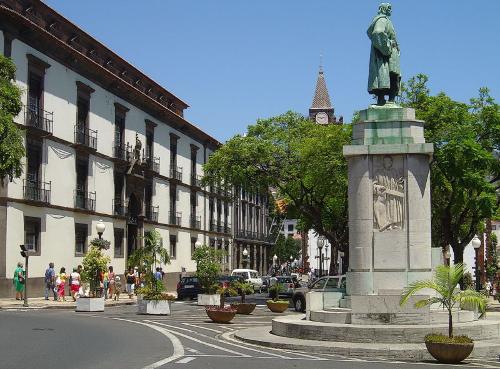 Statue of João Gonçalves Zarco in Funchal, MadeiraPhoto: Vitor Oliveira CC 2.0 Generic no changes made
Statue of João Gonçalves Zarco in Funchal, MadeiraPhoto: Vitor Oliveira CC 2.0 Generic no changes made
In 1351 Madeira (“Isola di Legname”, wood island) first appeared on a Florentine nautical chart, on the “Parte dell” Africa tratta dalla CartaV. del Portulano. It is still a mystery who can be noted as the real discoverer of Madeira.
From 1418 to 1420, the explorer João Gonçalves Zarco, together with two companions, Tristão Vaz Teixeira and Bartolomeu Perestrelo, set up the first Portuguese bases for the Portuguese crown on Porto Santo and Madeira. The island was called Ilha da Madeira, "Wood Island". Zarco had been expelled for this purpose by Henry the Navigator, making Madeira one of the first territories to be claimed for the Portuguese crown during the reign of João I.
The first settlements, built in 1425, were funded by João I and later by his son Prince Henry. Madeira was divided into two districts or "doaçães": Machico in the north under the administration of Teixeira, Funchal in the south under the administration of Zarco; the island of Porto Santo came under Perestrelo administration.
The subsequent colonization of Madeira was rapid and the digging of irrigation canals or "levadas" enabled agriculture, particularly sugar cane, also known as the white gold. However, this was at the expense of the forests on the island; by 1433 most of Madeira had already been deforested. In 1440 the eastern part of Madeira with Machico as its capital came under the authority of Tristão Vaz Teixeira. The nearby island of Porto Santo was loaned to Bartolomeu Perestrelo in 1446 and Gonçalves Zarco became governor of the western part of Madeira in 1460 with Funchal as its capital. The later discoverer of America, Christopher Columbus, was one of the new inhabitants of the island.
Madeira is developing; Funchal becomes the capital
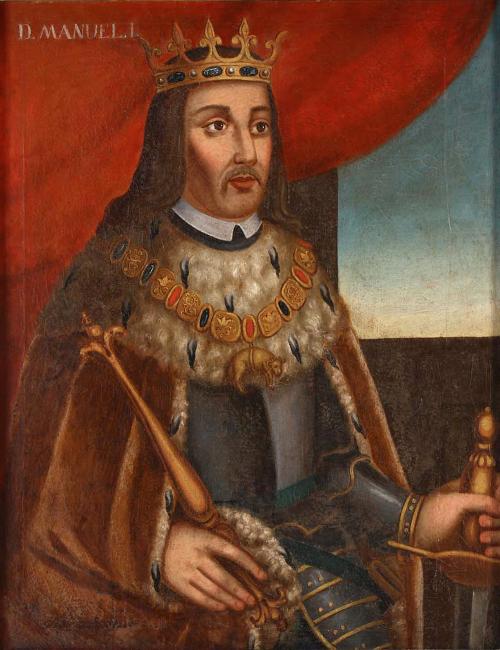 Manuel I of PortugalPhoto: Public domain
Manuel I of PortugalPhoto: Public domain
Madeira quickly grew into a bridgehead for the expansion of the Portuguese kingdom into a global colonial power. By the mid-15th century, Madeira had become one of the main sugar suppliers in Europe; the first sugar cane cuttings were already introduced in 1425. From 1452, the first slaves were imported, who worked the land, built terraces for agriculture and dug irrigation canals.
In 1497, King Manuel I integrated Madeira into the kingdom of Portugal, and appointed Funchal (city charter since 1508) as the sole capital of the archipelago and the descendants of Gonçalves Zarco became governor. At that time Madeira had about 5000 inhabitants and a very heterogeneous population with Portuguese, Dutch, Italians, Spaniards, Moors, Jews expelled from Spain, generally all adventurers and merchants. All settlements in the early days were on the sunny south coast; the colder, steeper and wetter north was not colonized until the 17th century. Due to the highly hilly landscape, interconnections were made by sea, resulting in the development of the ports of Machico, Funchal, Santa Cruz and Ponta do Sol.
Spaniards and English
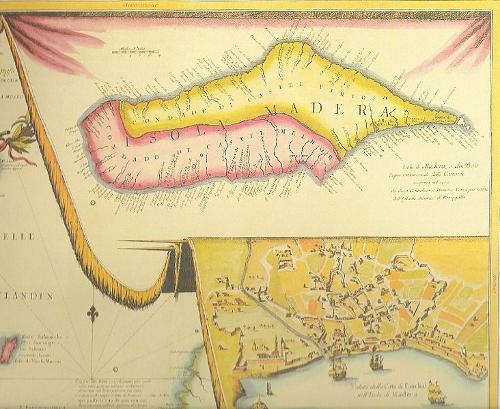 Map of Madeira from the 17th centuryPhoto: Public domain
Map of Madeira from the 17th centuryPhoto: Public domain
In 1516, Pope Leo X appointed Funchal as bishop's see and the Sé Cathedral was consecrated. Due to fierce competition from America, sugar cane exports are slowly but surely declining.
In 1580 Portugal lost its independence and became part of Spain, making Philip II the ruler of the Madeira archipelago. However, this period lasted only relatively short, because as early as 1640, Portugal, under King João, regained its independence after a revolt against the authority of Spain. Around that time Madeira had about 30,000 souls, including several thousand slaves.
The English, as an important trading nation, have also had a major influence on the development of Madeira. They did early business with the island's inhabitants, including James Cook, who bought wine for his crew in 1768. Rich English families came to Madeira to stimulate the export of wine, and in the mid-nineteenth century, many Englishmen traveled to Madeira, especially in winter. Tourism thus quickly became the main source of income and in 1891 the famous Hotel Reid's was opened as a winter retreat for the rich and noble from all over Europe. Before that, Madeira had been occupied by the English for seven years.
From 1801, English troops made Madeira their base in the Atlantic Ocean in the fight against Napoleon and the French. From 1807, British soldiers were stationed on the island for seven years, and after that time many Englishmen continued to live on the archipelago. From 1852 to 1872, viticulture was in crisis due to a number of diseases, which destroyed entire crops. This resulted in a large flow of emigration, especially to Venezuela and Australia. A cholera epidemic broke out among the population, resulting in approximately 7,000 victims.
Self-government and tourism development
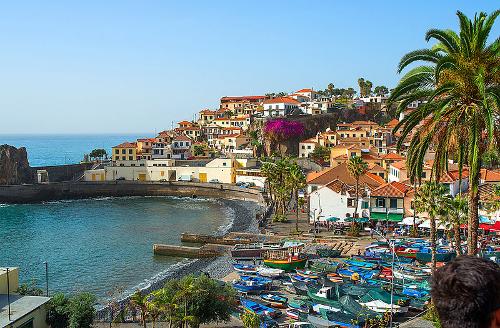 Madeira tourist attractionPhoto: Bengt Nyman CC 2.0 Generic no changes made
Madeira tourist attractionPhoto: Bengt Nyman CC 2.0 Generic no changes made
In 1902 Madeira gained self-government and after the monarchy fell in 1910 it became part of the republic of Portugal.
Madeira was also briefly involved in the First World War when German submarines bombed Funchal twice. In 1931, a general strike against the rule of the Portuguese dictator Salazar follows. From the Portuguese capital Lisbon, troops were deployed to quell the strike.
Due to the construction of airports, Madeira (Porto Santo, 1960 and Madeira, 1964) only became one of the most popular holiday destinations in the 1960s. In 1947 a regular service was set up from England to Madeira.
In 1976 the Carnation Revolution ended 50 years of Salazar dictatorship and democracy was introduced in Madeira. Madeira was then given the status of an autonomous region with its own parliament and its own president.
In 1993 the European Union supported Madeira with, among other things, agricultural subsidies.
See also the history of Portugal on TheWorldOfInfo.
Sources
Catling, C. / Madeira
Kosmos-Z&K
Lipps, S. / Madeira
Elmar
Madeira
APA Publications
Schetar, D. / Madeira
Het Spectrum
Stiller, R. / Madeira
Van Reemst
Underwood, J. / Het Madeira-boek
Sunflower Books
CIA - World Factbook
BBC - Country Profiles
Copyright: Team The World of Info